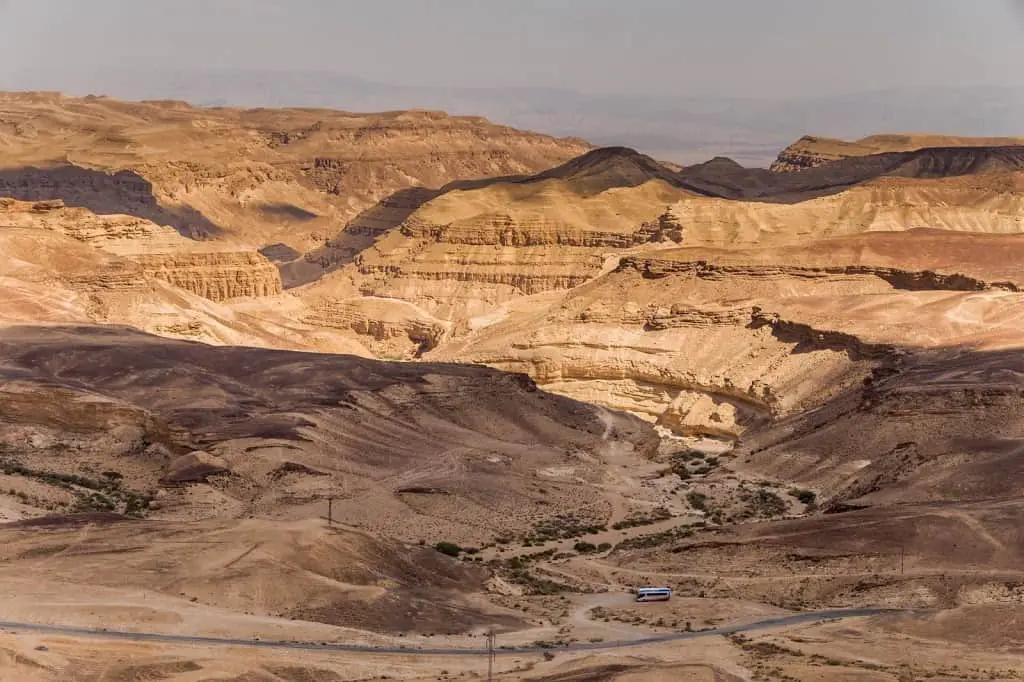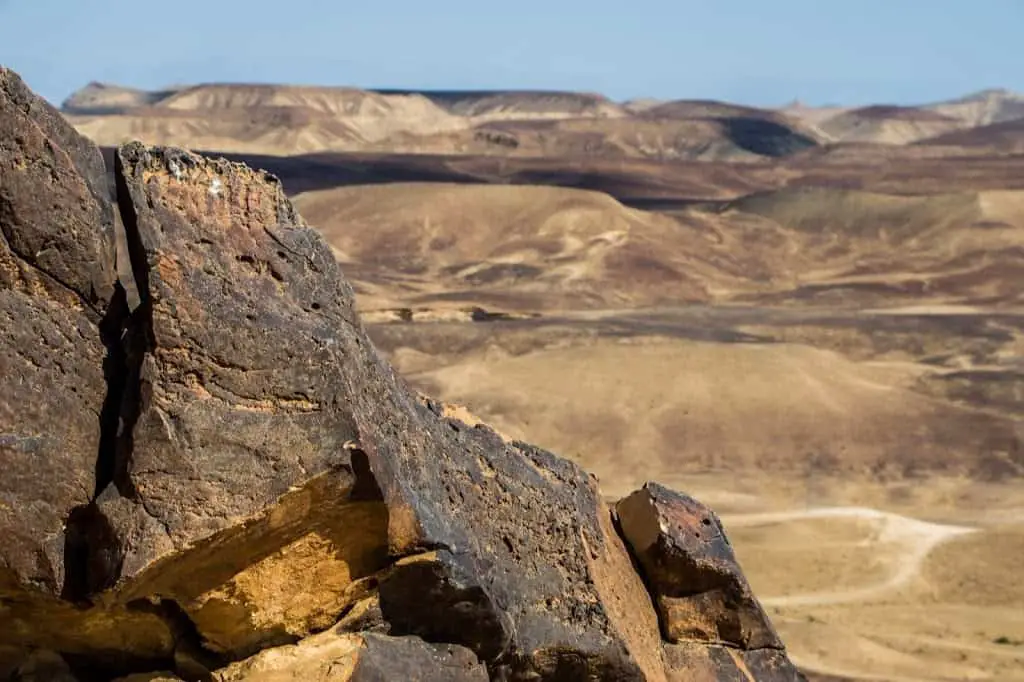HaMakhtesh HaGadol, Negev Desert – Map, Attractions, and More
HaMakhtesh HaGadol is also called the Big Crater, and Makhtesh Yeruham is one of three craters in the Negev desert.
HaMakhtesh HaGadol is the second-largest crater in Israel. There is also the small crater and Makhtesh Ramon (the largest crater). And it is called big is since it was identified before Makhtesh Ramon.
Table of Contents
Map
Since it is located near Yeruham, it is also called Makhtesh Yeruham.
Directions for drivers: Link to Waze and Link to Google Maps
Directions for public transport: Link to Moovit
Interactive map of the area:
And here is a photo of a map of the HaMakhtesh HaGadol:
About
Makhtesh is a geological landform considered unique to the Negev desert of Israel and the Sinai peninsula of Egypt. A makhtesh has steep walls of resistant rock surrounding a deep closed valley usually drained by a single wadi. The valleys have limited vegetation and soil, containing various colored rocks and diverse fauna and flora. The best-known and largest makhtesh is Makhtesh Ramon.
Although commonly referred to as “craters,” these formations are “erosion cirques” (steephead valleys or box canyons). Craters are formed by the impact of a meteor or volcanic eruption, whereas makhteshim are created by erosion.
Despite the quote from Wikipedia, our instructor explained that this is a common misconception, and there are Machteshim in other parts of the world as well.
HaMakhtesh HaGadol is also known as Makhtesh Hatira since it was drained by one river, Nahal Hatira.
Though it is called the big crater, it is the second largest after Makhtesh Ramon. It was called big since it was discovered and named before Makhtesh Ramon.
Note: if you are interested in how the big crater was created, read Makhtesh Ramon Visitors Center. Makhtesh Ramon, the big crater, and the small crater are all erosion craters.
And now, we will go over the most common attractions.
Mount Avnon Lookout
Here is a view from the walls of the Makhtesh:

The big crater is about 14 km long and 6 km wide.

After visiting the beautiful Mount Avnon Lookout, we drove into the Makhtesh.
Note: for additional information about the viewpoint, see Mount Avnon Lookout.
Colored Sands
Inside the Big Crater, you can find colored sands. It is not only the place where kids can fill bottles, but it is also a starting point for tracks.
For additional info, see colored sands, and we will start hiking.
Colored Sands and the Small Fin Track
One of the most popular hikes in the big crater is Colored Sands and the Small Fin. It starts at the colored sands parking. Then you follow the black trail until you reach the small fin (you can continue with the black track until the big fin). And you return using the green trail.
Our guide took us for a two-hour hike. After several minutes we found this:

It is a fossil of a reef. This a clear indication that once this area was covered with water.

Several views from the hike:

The border of the crater:

Hiking and our destination is the bus (near Ein Yorke’am):

And here Tristram’s starling or Tristram’s grackle came to visit:

They are gregarious and noisy, with a call that resembles a wolf whistle. They are also omnivorous.

Here you can see the layers of rock, which are almost in perpendicular positions:

This Tristram’s starling has more vibrant colors. So, this is probably a male:


As you can see, the rocks are colorful, and one of the attractions is collecting colored sand.

Summary
The Big Crater is a lovely place with various points of interest, and I listed the most common above. But keep in mind that it is the desert. Thus the best time for a visit is during the cold weather (usually winter).
There are many attractions in this area, and you can explore them using the interactive map above.
Have you visited the Big Crater? Tell us in the comment below about your experience.
That’s all for today, and I’ll see you in future travels!
Stay Tuned!
Additional Resources
Here are several resources that I created to help travelers:- Trip Planner with Attractions and Itineraries is the page that will help you create your perfect travel route.
- What is the Best Time to visit Israel? To answer this question, we will consider the weather, prices, holidays, festivals, and more.
- Information and Tips for Tourists to Israel will answer the most common questions tourists have about Israel (including safety, passports, weather, currency, tipping, electricity, and much more).
- Israel National Parks and Nature Reserves include a complete list, top ten, map, tickets (Israel Pass, Matmon, combo), and campsites.
- If you are looking for things to do, here are the pages for Jerusalem, Tel Aviv, Haifa, Sea Of Galilee, Akko (Acre), Eilat, Nazareth, Safed (Tzfat), and Makhtesh Ramon.









